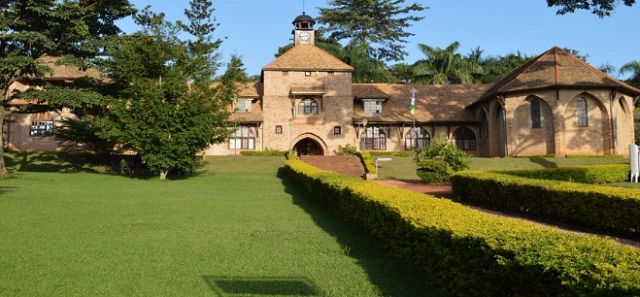
Kampala, Uganda | THE INDEPENDENT | Police in Mukono district is investigating circumstances under which Nathan Kamanzi, a student at Uganda Christian University-UCU died in a swimming pool.
The third-year student of Human Resource Management drowned last evening in a swimming pool at Hasteh Royale Hotel, about 3 kilometres from the university campus. The hotel is located at Njerere village in Mukono Municipality. Although still under construction, the hotel site has an operational swimming pool and pool table centre.
Walter Washika, the UCU Communications and Marketing Manager says that the university received information that the deceased, together with three other students, were drunk before jumping into the swimming pool, at the time the tragedy occurred. He was later rushed to the UCU clinic for treatment.
But Dr Robert Kajubi, the staff at the UCU clinic says that the student was pronounced dead on arrival. He faulted the rescue teams for transporting the student on a motorcycle from the swimming pool, where the accident occurred, to the clinic.
According to St John Ambulance, victims of drowning need to immediately receive cardiopulmonary resuscitation – CPR before they are moved. The CPR covers chest compressions and mouth-to-mouth resuscitation until they regain responsiveness if there is no other professional help to resuscitate them.
According to Washika, the pool attendant has already been arrested to help in investigations.
A gateman at the Hotel Site has told URN that the management has suspended operations until investigations into the incident are completed. Mukono District Police Commander Rogers Sseguya says that investigations into the matter are still ongoing.
Important Steps for CPR and Rescue Breaths as Explained by St Johns Ambulance
The cardiopulmonary resuscitation – CPR process requires that as a rescuer you place your hands on top of each other and push down in the centre of the victim’s chest firmly. Each time, the push is expected to go down between five and six centimetres.
The Mouth to Mouth resuscitation requires that you Turn the drowning person’s head to the side, allowing any water to drain from his or her mouth and nose. Turn the head back to the centre.
Begin mouth-to-mouth resuscitation on land, if possible, or in the water, if the injured person needs immediate life-and-death measures.
Strongly breathe four times into the mouth of the injured person as you pinch his or her nose. This helps air get past any water that is clogging the breathing passageways and the lungs.
After four strong breaths, put your ear near the mouth and watch the chest for any breathing movement.
Check the pulse for signs of life.
Repeat the cycle.
But according to medical experts, the first 48 hours after a drowning incident can be the most dangerous because of complications resulting from water exposure. These may include among others, pneumonia, infection, and heart failures.
*****
URN
 The Independent Uganda: You get the Truth we Pay the Price
The Independent Uganda: You get the Truth we Pay the Price



